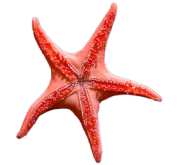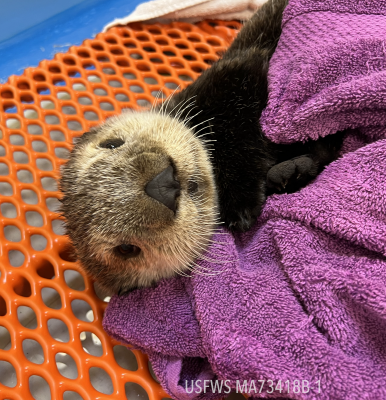ASLC Admits Two New Marine Mammal Patients September 14, 2022
The Wildlife Response Program patients include a young harbor seal and a sea otter pup
Seward, Alaska (Sept. 14, 2022) – The Alaska SeaLife Center (ASLC) recently admitted two patients to the Wildlife Response Program, a young male harbor seal (the third admitted in 2022) and a male sea otter pup.
The harbor seal pup was reported by the captain of a local charter fishing boat on August 22, 2022 after the pup climbed onto the boat’s deck near Hive Island, about 15 miles south of Seward in Resurrection Bay. Photographs sent to the ASLC showed a skinny, young male harbor seal pup. Upon meeting the boat in the harbor, it was clear to ASLC staff by the seal’s exhausted appearance and quiet behavior that he would need immediate medical attention. After receiving National Oceanic and Atmospheric Administration approval, the pup was transported back to the Alaska SeaLife Center for treatment.
After an initial examination, veterinary staff estimated that the seal was around two months old and was likely separated from his mother or weaned prematurely. The team’s main concerns were malnourishment, dehydration, and lethargy. Some wounds were also noted on the seal’s flippers. Once hydrated with supportive fluids, the seal quickly took to eating fish on his own. Recovering from starvation can be a slow process, and the team is currently providing additional stabilizing treatments and monitoring the patient further to understand the severity of his conditions.
The second rescue occurred September 7, 2022 after a caller to the ASLC’s 24-hour Stranded Marine Animal Hotline (888-774-7325) reported a pair of otters on a remote beach in the western Kenai Peninsula. Observers sent photographs and described a disheartening scene to ASLC hotline operators. They saw a moribund female sea otter that was barely moving or breathing with her juvenile pup vocalizing on top of her. The condition of the mother was dire, and the team determined she would likely not survive a transport back to Seward or treatment. Efforts were then focused on saving the male pup, estimated to be around four months old and too young to survive on its own. With approval from the U.S. Fish and Wildlife Service, the pup was admitted to the ASLC Wildlife Response program for care. The original observers were able to return to the remote site the next day and confirm that the adult had passed away.
The pup was examined upon arrival to ASLC and found to be underweight, but otherwise alert and strong. After the exam, he was swimming energetically and eating solid food. Over the next several days the team will be closely monitoring him for signs of illness or challenges keeping his coat in good condition.
You can follow the ASLC on Facebook and Instagram for more updates on these rescue patients as the team works to nurse them back to health.
The Alaska SeaLife Center’s Wildlife Response Program can provide care for animals like these thanks to donations from corporate sponsors and individual donors. People are encouraged to contribute to the care of this patient here: www.alaskasealife.org/donate. The Center acknowledges the ongoing generous support of the Wildlife Response Program from companies like ConocoPhillips, Marathon Petroleum Corporation, PetZoo, GCI, and a number of individual donors.
Call 1-888-774-SEAL(7325) if you see any marine mammal in distress in Alaska.


